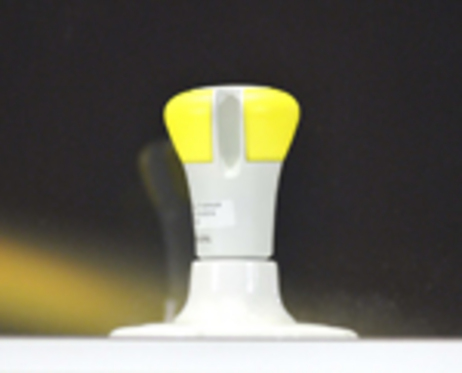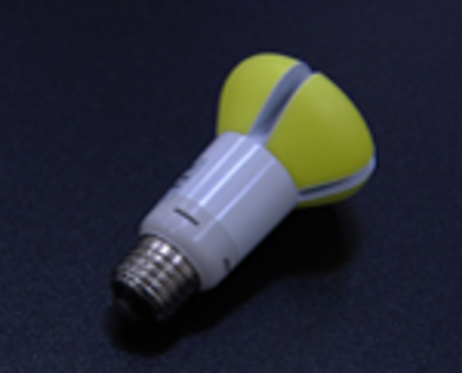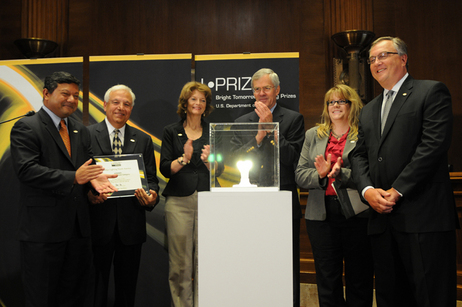Philips Wins $10 Million Prize for Energy Efficient Light Bulb of the Future
Published Apr-08-13Breakthrough:
Philips develops an energy saving light bulb to replace the common light bulb, in the United States Department of Energy-sponsored L-Prize competition.
Company:
Philips, Netherlands
The Story:
 Competitions spur innovation like nothing else, a fact not lost on the US government when it launched a multi-million dollar contest for environmentally friendly light bulbs.
Competitions spur innovation like nothing else, a fact not lost on the US government when it launched a multi-million dollar contest for environmentally friendly light bulbs.The L-Prize, also known as the Bright Tomorrow Lighting Prize is a US-government sponsored initiative to lower the country’s electric bill by motivating lighting manufacturers to develop high-efficiency solid-state lighting products to replace the common light bulb.
Huge Energy Savings Needed
At the time of the competition’s launch in 2008, the common 60-watt bulb accounted for 50% of the domestic incandescent market. It was estimated that if they were replaced by LED (light emitting diode) bulbs the US could save enough electricity per year to light more than 17 million households.
LEDs generate light through the movement of electrons through a semiconductor material. Unlike incandescent bulbs they don’t have a filament that will burn out; neither do they get particularly hot. LED lifespans are also far greater than those of conventional bulbs.
The open innovation competition has three categories:
• A replacement for 60W incandescent lamps
• A replacement for PAR38 halogen lamps
• A third category that has not been fully defined and not yet open for entries
Submissions have to be accompanied by a business plan, and the lighting products undergo rigorous assessments including photometric testing, field tests and stress tests.
A Brighter Future
To date, the competition has one winner - a 60-watt replacement product from Philips Lighting North America. The bulb met all the competition requirements and underwent 18 months of intensive testing to see that it met energy-saving, brightness and durability standards as well as other metrics.
The bulb runs on less than 10 watts but gives off the light of a 60-watt tungsten bulb, with the same even distribution. According to Phillips it will last 25 times longer than the average 60-watt incandescent bulb.
The energy saving is 83% and some estimates claim that it could save the US 44 billion pounds of carbon emissions per year.
“We looked at the L Prize challenge as an opportunity to innovate and develop an energy efficient alternative to a product that has remained largely unchanged for over a century,” said Zia Eftekhar, CEO of Philips Lighting North America. “
For their innovation, Philips was awarded a $10 million prize, and the bulbs went on general sale in April 2012. The company also earned a federal contract to be among the companies US agencies consider when they are purchasing replacement bulbs.
The Race for Energy Efficient Bulbs is Still On
For the 60W replacement bulb it appears to be job done, but the competition is far from over. Submissions are being invited for a PAR38 replacement. These are parabolic aluminized reflector (PAR) lamps, commonly known as spot or flood lights.
The third category is for the development of a 21st Century Lamp that delivers more than 150 lm/W. However, at the time of writing this (March 2013) the complete list of competition requirements has not been published, and the category is not yet open for submissions.
Next Story »



